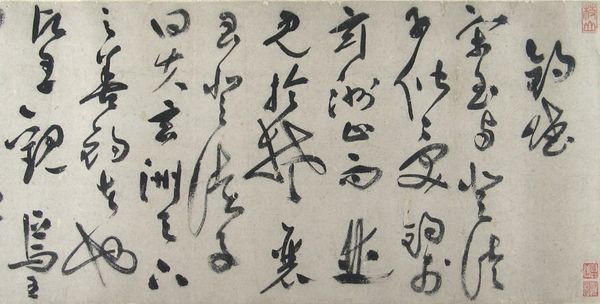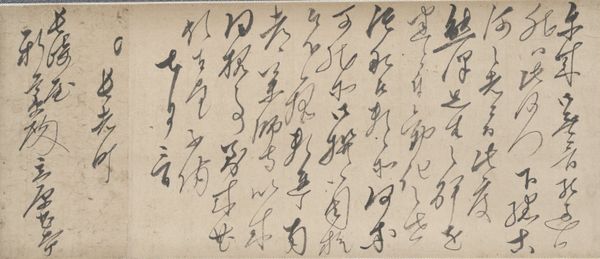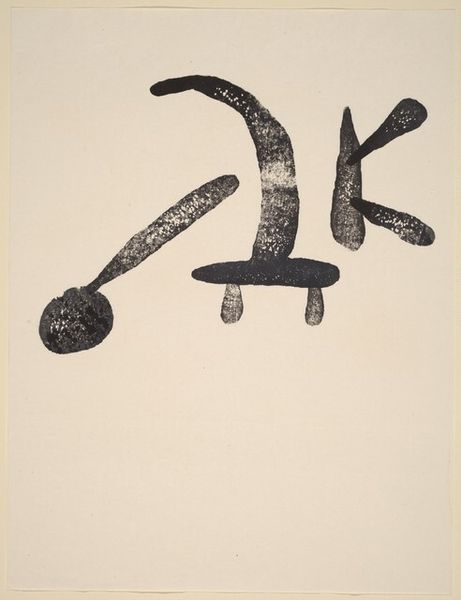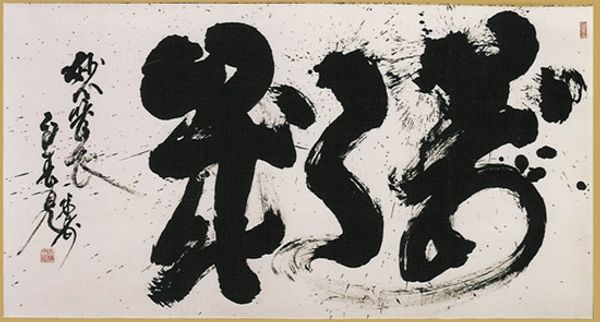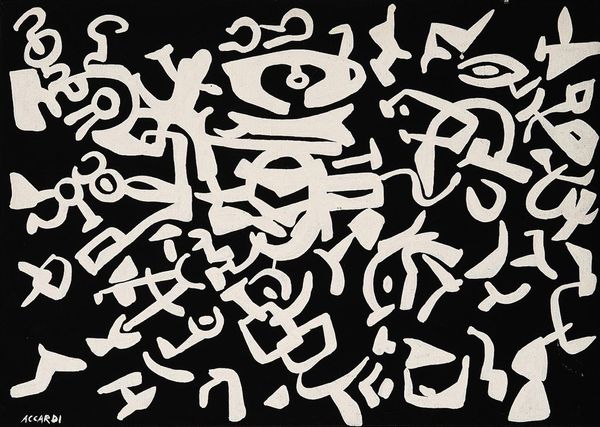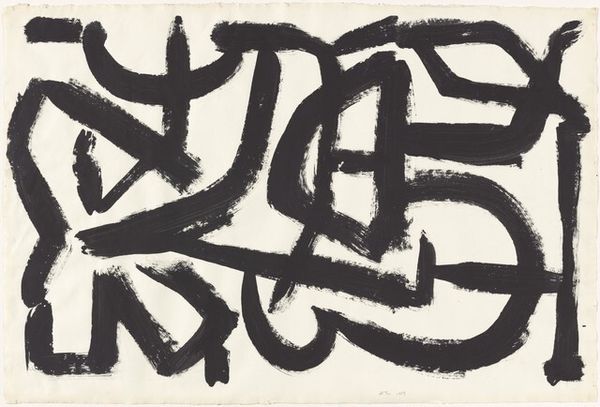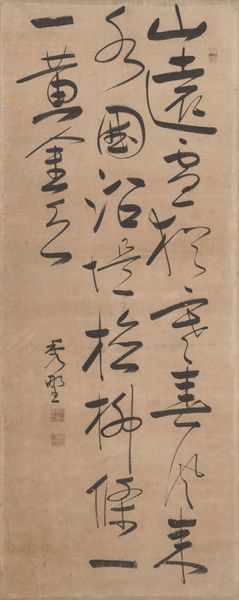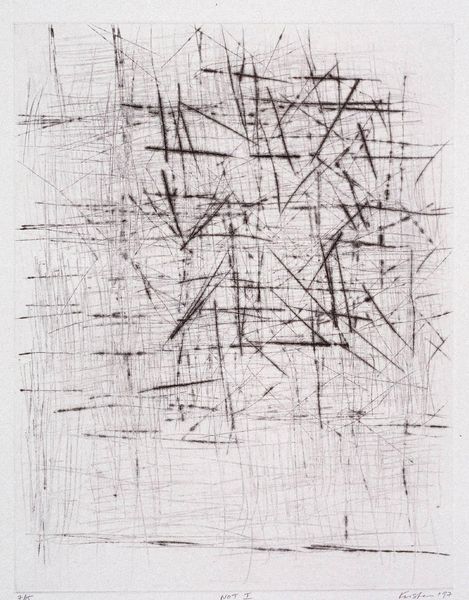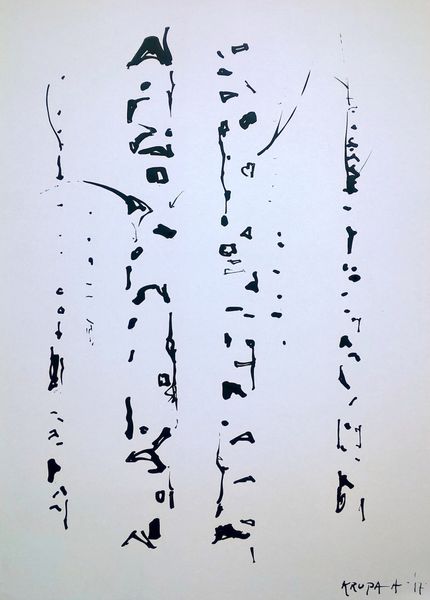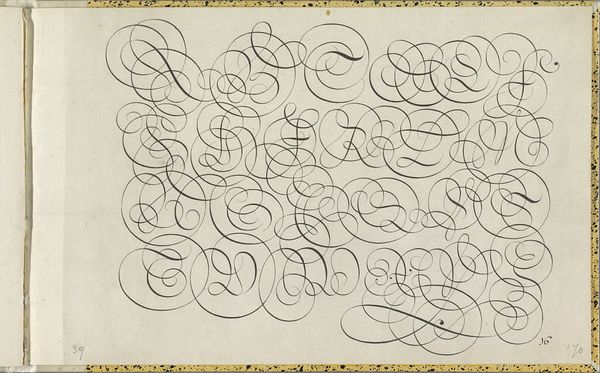
Copyright: Brice Marden,Fair Use
Brice Marden made "St. Barts 1," a print featuring calligraphic forms, sometime after a trip to St. Barts. Marden’s generation reckoned with the aftermath of Abstract Expressionism, a movement often celebrated for its masculine bravado and individual genius. In contrast, Marden sought a visual language that was both deeply personal and connected to the wider world. His choice of calligraphic marks in "St. Barts 1" opens up a conversation about cultural exchange and appropriation. Calligraphy, deeply rooted in Asian traditions, here becomes a medium for a Western artist to explore his experiences of place. What does it mean to borrow a form so tied to specific cultural and spiritual practices? Marden isn't merely replicating; he's engaging with the act of translation, interpreting a landscape through a different cultural lens. The stark black marks on a white field evoke the sensory experience of a place, reduced to its elemental forms. Perhaps Marden offers us not a depiction of a place, but a record of an encounter, an emotional residue of a time spent in a particular landscape.
Comments
No comments
Be the first to comment and join the conversation on the ultimate creative platform.
